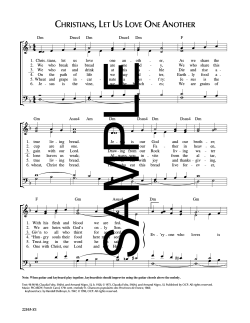
How to use SUSHI services and reports from Elsevier
How to use SUSHI services and reports from Elsevier Contents 1. 2. 3. 4. 5. SUSHI request codes for Super Account and Account level reports Troubleshooting and warning messages SUSHI messages Sample codes Useful links P P p p P 3-4 5 6 8-9 10 2 1. SUSHI request codes for Super Account and Account level reports To enable all of our customers to harvest COUNTER reports via SUSHI, we allow some differentiation in our SUSHI request codes. You can add and remove accounts and super accounts for SUSHI harvesting by changing the CustomerReference.ID element in the report request code. The information below explains how to manipulate the request code for report harvesting via SUSHI so that you receive reports for different (super) accounts. It requires only two easy-to-retrieve codes. 1.1. Change CustomerReference.ID with account number and platform code Some reports require a platform code so that SUSHI knows the platform on which to harvest statistics. The platform codes for the two Elsevier platforms supporting SUSHI are SC (for Scopus) and SD (for ScienceDirect). Insert the platform code in front of the account number, followed by a ‘/’. Elsevier account numbers start with a C (account) or S (Super Account) followed by a 10-digit number containing at least three zeroes. Look up this number in the contract. Sample CustomerReference.ID for a ScienceDirect report on Account level: SD/C000001234 Sample CustomerReference.ID for a Scopus report on Super Account level: SC/S000001234 1.2. Combinations of Super Account and Account level reports For a Super Account, SUSHI reports can be harvested at Account or Super Account level at the same time by combining a Super Account and several Account numbers within one CustomerReference.ID. The platform code is used only once at the beginning of the code, followed by the Super Account code and the Account code, separated by a ‘/’. Examples of CustomerReference.ID combinations: Report JR1 JR1GOA JR2 JR5 BR2 BR3 CustomerReference.ID ‘SD/S123456789’ ‘SD/C123456789’ ‘SD/S123456789/C123456789’ ‘SD/S123456789’ ‘SD/C123456789’ ‘SD/S123456789/C123456789’ ‘SD/S123456789’ ‘SD/C123456789’ ‘SD/S123456789/C123456789’ ‘SD/S123456789’ ‘SD/C123456789’ ‘SD/S123456789/C123456789’ ‘SD/S123456789’ ‘SD/C123456789’ ‘SD/S123456789/C123456789’ ‘SD/S123456789’ ‘SD/C123456789’ ‘SD/S123456789/C123456789’ Description Number of Successful Full-Text Article Requests by Month and Journal Number of Successful Gold Open Access Full-Text Article Requests by Month and Journal Access Denied to Full-Text Article Requests Number of Successful Full-text Article Requests by Year-of Publication (YOP) and Journal Number of Successful Section Requests by Month and Title Access Denied to Content Items by Month, Title and Category 3 Report PR1 CR1 CustomerReference.ID ‘SD/S123456789’ ‘SD/C123456789’ ‘SD/S123456789/C123456789’ ‘SC/S123456789’ ‘SC/C123456789’ ‘SC/S123456789/C123456789’ ‘SD/S123456789’ ‘SD/S123456789/SA’ CR1 Description Total Searches, Result Clicks and Record Views by Month and Platform Number of Successful Full-Text Journal Article or Book Chapter Requests by Month Number of Successful Full-Text Journal Article or Book Chapter Requests by Month Entitled by Consortium (Super Account only) Table 1 – supported reporting dimensions COP 3 reports 4 2. Troubleshooting and warning messages An error in a report request code will result in a warning message. The table below shows causes of errors and the steps to resolve them. Exception Severity Info or Debug Level Exception Number Invocation Conditions Info Debug Warning 0 1-999 Service Not Available Fatal 1000 Service Busy Fatal 1010 Requestor Not Authorized to Access Service Requestor is Not Authorized to Access Usage for Institution Report Not Supported Error 2000 Any. These messages will never be standardized and service providers can design them as they see fit. Any. This range is reserved for the use of service providers to supply their own custom warnings. Service is executing a request, but due to internal errors cannot complete the request. Service must return ReportResponse and no payload. Service is too busy to execute the incoming request. Service must return ReportResponse with this exception and no payload. Client should retry the request after some reasonable time. Requestor ID is not recognized or not authorized by the service. Error 2010 Error 3000 Report Version Not Supported Invalid Date Arguments Error 3010 Error 3020 No Usage Available for Requested Dates Error 3030 Warnings Requestor has not been authorized to harvest usage for the institution identified by the CustomerReferenceID, or the CustomerReferenceID is not recognized. The requested report name, version, or other means of identifying a report that the service can process is not matched against the supported reports. Requested version of the data is not supported by the service. Any format or logic errors involving date computations (e.g., end date is before begin date). Service did not find any data for the date range specified. 5 2.1. Troubleshooting for Super Accounts COUNTER reports for Super Accounts (especially those with a large number of member accounts and many titles) can be bulky, causing them to consume processing capacity and result in frequent time-out exceptions. These tips may help: 1. Report requests by member account are more likely to be successful than a single consortium request for all members. 2. In the current version of SUSHI, Elsevier allows monthly reports only. The ability to run reports for more than one month has been disabled. 3. The first few days after monthly reports are released (when notification emails go out) tend to be very busy. Requests submitted after this period are more likely to successful. 3 SUSHI messages 3.1 ReportRequest 6 3.2. ReportRequest parameter values Parent Element ReportRequest Requestor Child Element ID Created ID CustomerReference Name Email ID Description Text Identifier Date time stamp of request Required field ID is the integrator ID of the organization submitting the request. Sushi account name Your e‐mail address Required Platform Code Required Account ID (Optional) SA parameter ReportDefinition Name Release UsageDateRange Begin End Required Name and Release representing report ID and version of requested COUNTER report. Names are assigned by COUNTER. Required SUSHI Release Start date End date Possible Values Any Any Assigned by Elsevier Any Any SD (for ScienceDirect) or SC (for Scopus) with ‘/’ separator “C123456789” for Account or “S123456789” for Super Account Optional parameter for showing SA entitled usage preceded by separator ‘/’ Acronym of COUNTER report. Examples: JR1, JR1A, CR1, BR2 Release number currently supported by Elsevier: 3.0 YYYY‐MM‐DD (e.g., 2010‐08‐01) YYYY‐MM‐DD (e.g., 2010‐08‐31) 7 4. Sample codes 4.1. ReportRequest sample Below is a sample request message; the fields highlighted in yellow are variables. Table 1 provides an overview of these variables. Sample Request message filled with possible data values: <soapenv:Envelope xmlns:soapenv="http://schemas.xmlsoap.org/soap/envelope/" xmlns:coun="http://www.niso.org/schemas/sushi/counter" xmlns:sus="http://www.niso.org/schemas/sushi"> <soapenv:Header/> <soapenv:Body> <coun:ReportRequest ID="Counter Report Request" Created="2012-10-18T01:23:45.678Z"> <sus:Requestor> <sus:ID>SUSHI-EXAMPLE</sus:ID> <sus:Name>SUSHI-EXAMPLE</sus:Name> <sus:Email>sushi@example.com</sus:Email> </sus:Requestor> <sus:CustomerReference> <sus:ID>SD/S000000123/C000012345</sus:ID> </sus:CustomerReference> <sus:ReportDefinition Name="JR1" Release="3.0"> <sus:Filters> <sus:UsageDateRange> <sus:Begin>2012-09-01</sus:Begin> <sus:End>2012-09-30</sus:End> </sus:UsageDateRange> </sus:Filters> </sus:ReportDefinition> </coun:ReportRequest> </soapenv:Body> </soapenv:Envelope> 8 4.2. ReportResponse Below is an example of a report response message. <soapenv:Envelope xmlns:soapenv="http://schemas.xmlsoap.org/soap/envelope/" xmlns:xsd="http://www.w3.org/2001/XMLSchema" xmlns:xsi="http://www.w3.org/2001/XMLSchemainstance"> <soapenv:Body> <ReportResponse Created="2012‐10‐18T14:44:21.753Z" xmlns="http://www.niso.org/schemas/sushi/counter"> <ns1:Requestor xmlns:ns1="http://www.niso.org/schemas/sushi"> <ns1:ID>SUSHI‐EXAMPLE</ns1:ID> <ns1:Name>SUSHI‐EXAMPLE</ns1:Name> <ns1:Email>test@sushi.com</ns1:Email> </ns1:Requestor> <ns2:CustomerReference xmlns:ns2="http://www.niso.org/schemas/sushi"> <ns2:ID>SD/S000000123/SA</ns2:ID> </ns2:CustomerReference> <ns3:ReportDefinition Name="CR1" Release="3.0" xmlns:ns3="http://www.niso.org/schemas/sushi"> <ns3:Filters> <ns3:UsageDateRange> <ns3:Begin>2010‐08‐01</ns3:Begin> <ns3:End>2010‐08‐31</ns3:End> </ns3:UsageDateRange> </ns3:Filters> </ns3:ReportDefinition> <Report> <ns4:Report ID="1487D5F74FAC7C00D4D8EE949AF0069J" Created="2012‐10‐18T14:44:02.000Z" Name="Consortium Report 1: Number of Succesful Full‐Text Journal Article or Book Chapter Requests by Month" Title="Consortium Report 1: Number of Succesful Full‐Text Journal Article or Book Chapter Requests by Month (SA Ent.)" Version="3" xmlns:ns4="http://www.niso.org/schemas/counter"> <ns4:Vendor> <ns4:Name>Reed Elsevier B.V.</ns4:Name> <ns4:ID>Elsevier ‐ ScienceDirect</ns4:ID> <ns4:Contact> <ns4:Contact>Your Science direct contact</ns4:Contact> <ns4:E‐mail>sciencedirect@elsevier.com</ns4:E‐mail> </ns4:Contact> <ns4:WebSiteUrl>http://scienceDirect.elsevier.com</ns4:WebSiteUrl> <ns4:LogoUrl>http://scienceDirect.elsevier.com/pic/logo.png</ns4:LogoUrl> </ns4:Vendor> <ns4:Customer> <ns4:Name>Customer Name</ns4:Name> <ns4:ID>123456</ns4:ID> <ns4:ReportItems> <ns4:ItemIdentifier> <ns4:Type>Proprietary</ns4:Type> <ns4:Value/> </ns4:ItemIdentifier> <ns4:ItemPlatform>ScienceDirect</ns4:ItemPlatform> <ns4:ItemPublisher>Elsevier</ns4:ItemPublisher> <ns4:ItemName>Journal Name</ns4:ItemName> <ns4:ItemDataType>Journal</ns4:ItemDataType> 9 <ns4:ItemPerformance PubYr="0"> <ns4:Period> <ns4:Begin>2010‐08‐01</ns4:Begin> <ns4:End>2010‐08‐31</ns4:End> </ns4:Period> <ns4:Category>Requests</ns4:Category> <ns4:Instance> <ns4:MetricType>ft_html</ns4:MetricType> <ns4:Count>234</ns4:Count> </ns4:Instance> <ns4:Instance> <ns4:MetricType>ft_pdf</ns4:MetricType> <ns4:Count>324</ns4:Count> </ns4:Instance> <ns4:Instance> <ns4:MetricType>ft_total</ns4:MetricType> <ns4:Count>558</ns4:Count> </ns4:Instance> </ns4:ItemPerformance> </ns4:ReportItems> </ns4:Customer> </ns4:Report> </Report> </ReportResponse> </soapenv:Body> </soapenv:Envelope> 5. Useful links - COUNTER: SUSHI: NISO SUSHI page: FAQ (by NISO): Service: Test page: http://projectcounter.org/code_practice.html http://www.niso.org/schemas/sushi/#counter http://www.niso.org/workrooms/sushi http://www.niso.org/workrooms/sushi/faq/ http://services.usagereports.elsevier.com:8080/axis/services/SushiServicePort http://services.usagereports.elsevier.com/StandardSushiServicesPage.asp 10
© Copyright 2025









